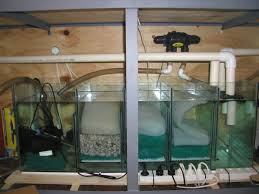Aquarium enthusiasts know that maintaining a healthy and thriving aquatic environment requires more than just filling a tank with water and fish. One essential component for achieving this is an aquarium sump. A sump is an additional tank that filters and processes water before it returns to the main aquarium, providing a range of benefits that promote optimal conditions for aquatic life.
This beginner’s guide to aquarium sumps and maintenance will provide a comprehensive introduction to sump systems and their maintenance, designed for those new to the practice. We will explore the different compartments and filtration stages in a sump, the components necessary for setting up a seamless sump system, and the importance of understanding the aquarium nitrogen cycle.
By the end of this guide, you will have the knowledge and tools to maintain a healthy and thriving aquarium environment, ensuring that your fish and other aquatic life receive the best possible care.
Key Takeaways
- An aquarium sump is a customizable filtration system with different compartments for mechanical, chemical, and biological filtration stages.
- Understanding the purpose of each component in a sump setup is crucial for its proper installation, testing, and maintenance.
- Aquarium maintenance requires proper preparation and execution, including establishing the nitrogen cycle, upgrading the aquarium, and monitoring water temperature.
- The seamless sump experience provides superior filtration efficiency, increased water volume, and flexibility to adapt to changing aquarium needs.

Sump Basics
The beginner’s guide to aquarium sumps provides a comprehensive understanding of how sumps work.
An aquarium sump is a customizable filtration system providing superior efficiency and increased water volume. The sump tank typically contains different compartments for mechanical, chemical, and biological filtration stages, and additional equipment, such as protein skimmers or media reactors, can be housed in the sump.
The overflow box allows water to flow from the main aquarium into the sump. At the same time, the return pump options move water back into the main aquarium, creating a continuous water flow. Understanding the purpose of each component in a sump setup is crucial for maintaining a healthy aquarium environment.
When setting up an aquarium sump, choosing the right components and equipment is essential. The sump tank, overflow box, return pump, and plumbing are necessary components of an aquarium sump. Optional components may include protein skimmers or media reactors.
Proper positioning and installation of the sump are crucial for ensuring efficient water circulation and filtration. Testing and adjusting the sump system, regular maintenance tasks, and troubleshooting common issues are important for a seamless sump experience.
Fish enthusiasts can create a thriving aquarium environment by following the guidelines for setting up and maintaining an a.
Setting up a Sump
To properly set up an aquarium sump, it is important first to gather all necessary equipment and materials and carefully plan the placement and installation of each component. Here are some steps to follow when setting up a sump:
- Choose a sump tank that is appropriate for the size of your aquarium and has adequate space for the desired filtration equipment.
- Install an overflow box in the aquarium to regulate the water flow into the sump.
- Choose a return pump that can handle your setup’s water flow rate and head height.
- Install plumbing that connects the overflow box, sump tank, and return pump to allow for efficient water flow.
After the sump is set up, monitoring it regularly for any issues and troubleshooting as needed is important. Common sump issues include leaks, clogs, and overflowing. Identifying and addressing these issues promptly is important to prevent damage to the aquarium and its inhabitants.
Regular maintenance tasks such as cleaning the sump components and replacing filter media are crucial for maintaining optimal water quality and promoting a healthy aquarium environment.
Maintenance and Care
Regular monitoring and upkeep of the aquarium sump system are crucial for ensuring optimal water quality and promoting a healthy environment for aquatic organisms.
Maintenance tasks include checking and adjusting water levels to ensure proper flow, cleaning sump components such as filter media, and monitoring water temperature to ensure it remains within the appropriate range for fish health. A thermometer should be used to monitor water temperature regularly, and adjustments to the heater may be necessary to maintain the desired temperature.
In addition to these routine maintenance tasks, it is important to watch for any signs of issues with the sump system. These may include unusual noises or vibrations, leaks or drips, or water clarity or odor changes.
Addressing these issues promptly can help prevent larger problems from developing and ensure that the sump system continues to function properly.
Regular maintenance and care of the aquarium sump system are essential for maintaining a healthy and thriving aquatic environment.
Frequently Asked Questions
Conclusion
In conclusion, aquarium sumps are crucial to maintaining a healthy and thriving aquarium environment. Hobbyists can benefit from increased water volume, improved water quality, and filtration capacity by using an aquarium sump. Setting up a sump can seem daunting, but proper planning and preparation can be a straightforward process. Choosing the right components and understanding the different compartments and filtration stages in a sump is essential to ensure optimal performance.
Regular maintenance and care are vital to keep the sump system running smoothly and maintain healthy water parameters. Understanding the aquarium nitrogen cycle and performing regular water changes, along with other maintenance tasks such as cleaning the sump and replacing filter media, are crucial for the health of the fish and the overall aquarium environment.
Troubleshooting common issues such as leaks or clogs promptly can prevent larger problems. With proper maintenance and care, an aquarium sump can provide a seamless and optimal environment for fish to thrive.



